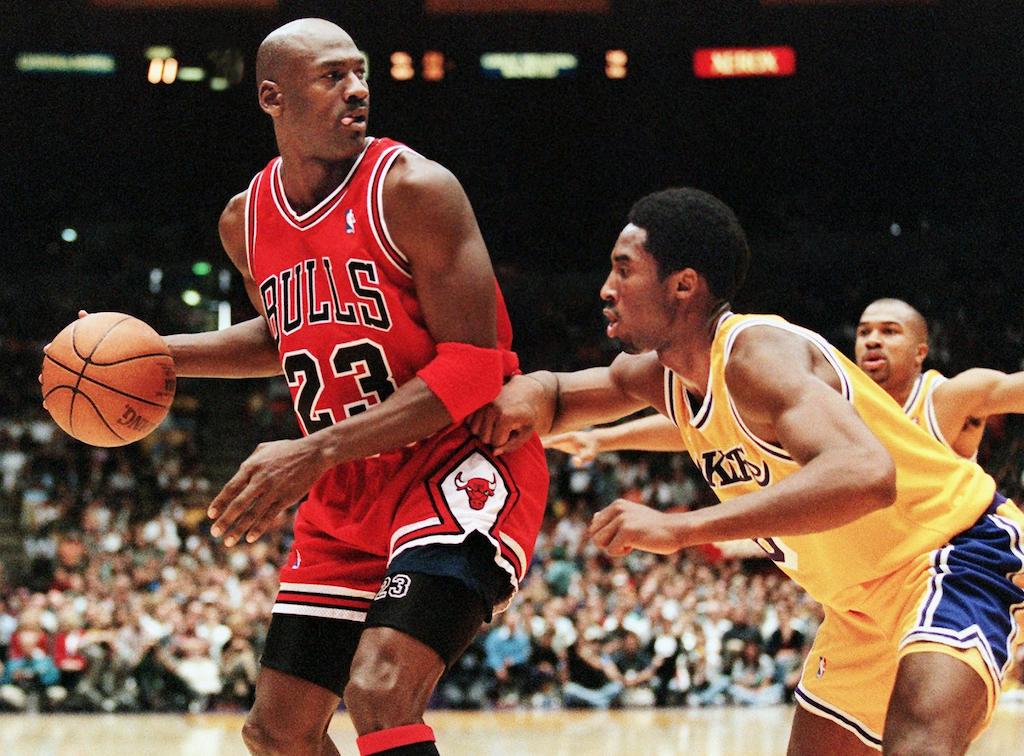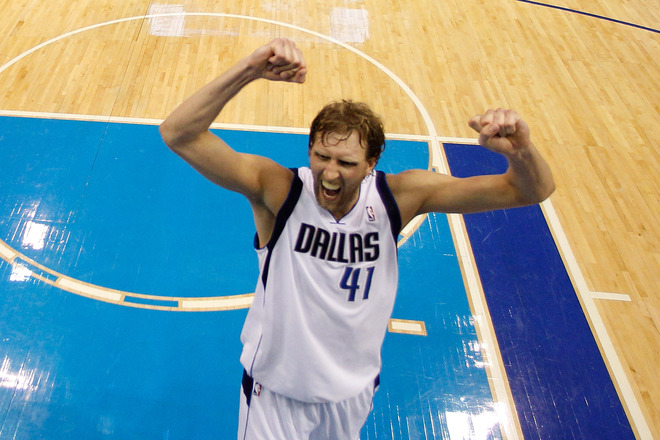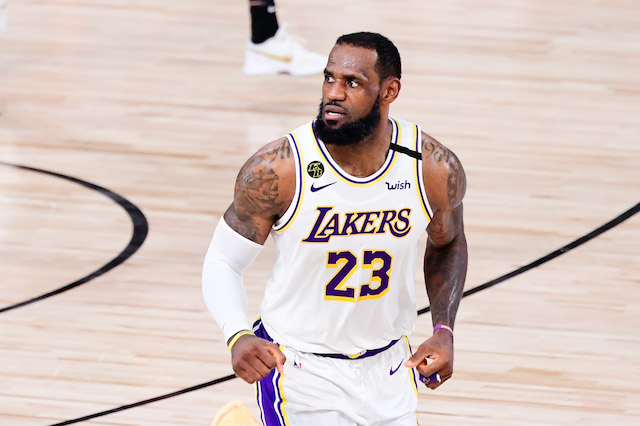
The NBA honored its 75 greatest players — 76 to be exact because of a tie — on Feb. 20, 2022, in Cleveland, Ohio. LeBron James was one of 45 members of the all-time 75 team who came in person and participated in the festivities.
For LeBron, being a part of an event to honor basketball’s greatest fraternity was like seeing the posters on his bedroom wall come to life. “To see those guys and then be on stage with those guys — it’s just crazy,” LeBron said.
Bill Russell was one of the living legends who were honored in Cleveland. Russell won 11 championships in 13 years with the Boston Celtics. The man has more rings than fingers. Commissioner Adam Silver summed it best when he called Russell basketball’s Babe Ruth.
The NBA 75th anniversary team was selected by a blue-ribbon panel of current and former NBA players, coaches, general managers, team and league executives, WNBA legends, sportswriters, and broadcasters. Voters were asked to select the 75 greatest players in NBA history without regard to position. Panelists did not rank their selections. Current and former players were not allowed to vote for themselves.
Choosing the 75 greatest players in the history of the NBA was no easy task. For the most part, the blue-ribbon panel got it right. But there were a few notable misses.
OneManFastBreak thought it would be fun to revisit the list and rank them in order from 1 to 75, with some editing to make the list our own. The benchmarks were based on individual accomplishments, team success (with more weight placed on postseason resume and titles), how they matched up against other great players of their era, overall impact on the game, and legacy.
Here are the 75 greatest basketball players of all time, based on One Man’s opinion.
1-Michael Jordan
2-Kobe Bryant
3-Kareem Abdul-Jabbar
4-Bill Russell
5-Magic Johnson
6-LeBron James
7-Stephen Curry
8-Shaquille O’Neal
9-Tim Duncan
10-Larry Bird
11-Wilt Chamberlain
12-Julius Erving
13-Jerry West
14-Hakeem Olajuwon
15-Moses Malone
16-Kevin Garnett
17-David Robinson
18-Kevin Durant
19-Bob Pettit
20-Isiah Thomas
21-Giannis Antetokounmpo
22-Nikola Jokic
23-Oscar Robertson
24-Willis Reed
25-George Mikan
26-Kawhi Leonard
27-Scottie Pippen
28-Rick Barry
29-Dave Cowens
30-Dirk Nowitzki
31-Wes Unseld
32-John Havlicek
33-Dwyane Wade
34-Karl Malone
35-Charles Barkley
36-Jason Kidd
37-Allen Iverson
38-Elgin Baylor
39-John Stockton
40-Bill Walton
41-Bob McAdoo
42-Gary Payton
43-Bob Cousy
44-Elvin Hayes
45-Patrick Ewing
46-James Worthy
47-Walt Frazier
48-Kevin McHale
49-Clyde Drexler
50-George Gervin
51-Dennis Johnson*
52-Earl Monroe
53-Paul Arizin
54-Joe Dumars*
55-Dennis Rodman
56-Paul Pierce
57-Nate Archibald
58-Sam Jones
59-Steve Nash
60-Ray Allen
61-Klay Thompson*
62-Dwight Howard*
63-Dikembe Mutombo*
64-Tony Parker*
65-Reggie Miller
66-James Harden
67-Russell Westbrook
68-Nate Thurmond
69-Pete Maravich
70-Chris Paul
71-Billy Cunningham
72-Dominique Wilkins
73-Manu Ginobili*
74-Bernard King*
75-Draymond Green*
* Wasn’t included in the original 75th anniversary team
Honorable mention: Lenny Wilkens, Hal Greer, Robert Parish, Dolph Schayes, Jerry Lucas, Bill Sharman, Dave DeBusschere, Dave Bing, Artis Gilmore, Sidney Moncrief, Adrian Dantley, Chris Mullin, Tim Hardaway, Alonzo Mourning, Vince Carter, Tracy McGrady, Chris Webber, Pau Gasol, Ben Wallace, Chauncey Billups, Carmelo Anthony, Anthony Davis, Yao Ming, Jimmy Butler, Damian Lillard.
OMFB’s top-12 list is rock solid, and the space between each of them is minuscule. You won’t hear pushbacks here if Kareem Abdul-Jabbar was placed ahead of Michael Jordan, or LeBron James ahead of Kobe Bryant, or Shaquille O’Neal ahead of Magic Johnson. The order can be rearranged but the history of basketball can’t be written without mentioning Jordan, Kobe, Kareem, Bill Russell, Magic, Tim Duncan, LeBron, Shaq, Larry Bird, Wilt Chamberlain, Julius Erving, and Stephen Curry.
Jordan is almost universally recognized as the GOAT. Air Jordan’s resume speaks for itself. MJ was a perfect 6-0 in the NBA Finals and named Finals MVP six times. Once he dethroned Magic in 1991, he never relinquished the crown until he retired.
Kobe is No. 2 on the OMFB list. The Black Mamba was a facsimile of Air Jordan. He was the closest thing to MJ. Kobe and Mike were the same height and had the same body type. Kobe even sounded like Mike. Imitation is the greatest form of flattery. Jordan gives rare praise to his contemporaries, but he makes an exception for Kobe. “He was a mentally tough kid, maybe even tougher than I was,” Jordan said of Kobe, who tragically died in a helicopter crash on Jan. 26, 2020. Jordan spawned millions of hoopsters who wanted to be like Mike. Kobe gifted the next generation of ballers the Mamba Mentality. If you’re still not convinced that Kobe deserves to be No. 2 on the all-time list, pull up the YouTube video from Jan. 22, 2006. Kobe authored arguably the greatest individual performance in NBA history when he scored 81 points in 42 minutes. Phil Jackson, who coached Michael Jordan in Chicago, was sitting on the Lakers bench for Kobe’s 81-point game. He put it in proper perspective. “It was another level,” Jackson said. “I’ve seen some remarkable games, but I’ve never seen one like that before.”
Some LeBron fans might be aghast seeing their beloved king at No. 6. But here’s the cold, hard honest fact. LeBron lost six times in 10 trips to the NBA Finals. He has a 22-33 win-loss record in The Finals. Magic (24-26), Erving (10-12) and Wilt (16-19) are the other top-12 players who had sub-.500 records in The Finals. LeBron lost to Duncan’s San Antonio Spurs twice and he could have been 0-3 against Duncan if Ray Allen hadn’t made a ridiculous corner 3-pointer. LeBron’s place among basketball’s all-time greats is secure. But to say he’s had a better career than Jordan, Kobe, Kareem, Magic, Russell, or even Duncan is up for debate.
Steph Curry broke into the top 10 after winning his fourth NBA title. Steph is one of five active players in the top 30 who can still alter their ranking. Curry is universally recognized as the best long-range shooter, and when he finally hangs up his Under Armour sneakers he might end up having the greatest impact in the game. Because of Steph — the NBA’s all-time leader in 3-pointers made — there’s a whole generation of young ballers at various levels launching shots from well beyond the arc.
OMFB made the difficult decision to remove nine players from the league’s original top-75 list and inserted nine new names: Joe Dumars, Dennis Johnson, Dwight Howard, Dikembe Mutombo, Klay Thompson, Tony Parker, Manu Ginobili, Bernard King, and Draymond Green.
Dumars was a two-time NBA champ and Finals MVP in 1989. Thompson is a four-time NBA champ and arguably the second-greatest 3-point shooter we’ve ever seen. Thompson pulled off an unthinkable feat in 2017 when he scored 60 points in 29 minutes, using just 11 dribbles. Dennis Johnson earned three championship rings and was Finals MVP in 1979. Larry Bird considered DJ the best player he ever played with. Howard was a three-time Defensive Player of the Year (DPOY), carried the Orlando Magic to the NBA Finals in 2009, and won a title with the L.A. Lakers in 2020. Mount Mutombo was a four-time DPOY and pulled out the “finger wag” each time he blocked a shot.
Tony Parker inspired a generation of new-age point guards. Aside from winning the 2007 Finals MVP, the four-time NBA champion’s biggest contribution to the game was his signature shot: the tear-drop floater. The vast majority of guards in today’s game, from high school to college to the pros, have a floater in their bag of tricks. Parker’s backcourt mate in San Antonio, Ginobili, sacrificed personal statistics in order for the Spurs to win titles. Ginobili posted modest numbers throughout his career (13.3 points, 3.5 rebounds, 3.8 assists), but his 72% winning percentage ranks among the all-time best. Ginobili also introduced one of the best basketball moves in recent memory — the Eurostep.
Bernard King was a scoring machine until he wrecked his knee at the peak of his powers. Armed with a smooth turnaround jumper that was nearly impossible to stop, King put on a show in the 1984 playoffs as he averaged 34.8 points and almost single-handedly led the New York Knicks to the conference semifinals.
Outside of Dennis Rodman, four-time champ Draymond Green might be the most unique player in NBA history. The 2017 DPOY won’t blow you away with individual stats but he’s arguably the heart and soul of the Golden State Warriors dynasty. Green is the primary playmaker on offense as the point forward and the anchor on defense.
The first 75 years of the NBA can be broken down into five eras dominated by 30 icons. From the 1950s through the 1960s, Jerry West, Oscar Robertson, Elgin Baylor, Bob Cousy, George Mikan, Bob Pettit, Wilt Chamberlain, and Bill Russell were the pioneers.
Kareem Abdul-Jabbar, Dave Cowens, John Havlicek, and Julius Erving carried the torch through a rough patch in the 1970s when the ABA and NBA competed for a dwindling audience.
Magic and Bird revived basketball in the 1980s, arguably the league’s golden era that also included the rise of Isiah Thomas’ “Bad Boys” Detroit Pistons. Moses Malone teamed up with Dr. J during the 1982-83 season and authored one of the most dominant playoff runs, sweeping Magic’s Lakers in The Finals.
Michael Jordan took the baton from Magic and Bird and ruled the 1990s. Jordan won six championships in an eight-year span, denying peers Charles Barkley and Karl Malone from winning rings. Hakeem Olajuwon benefited from Jordan’s brief retirement in 1994-95, winning two titles with the Houston Rockets. David Robinson teamed up with Tim Duncan in San Antonio and won titles in 1999 and 2003.

The immediate post-Jordan era was dominated by five players: Kobe Bryant, Shaquille O’Neal, Kevin Garnett, Dirk Nowitzki, and Duncan. Kobe, Shaq, and Duncan combined to win 13 NBA titles, four regular-season MVPs, and eight Finals MVPs from 1999 to 2010. For a decade, the road to the NBA Finals went through Kobe, Shaq, and Duncan.
Nowitzki and Garnett revolutionized the game and ushered in a new era of big men. Garnett made it possible for high schoolers to skip college basketball and turn pro at 19. Nowitzki opened the door for European big men who preferred to face the basket instead of having their back to the basket. Nowitzki and Garnett were instrumental in the game’s evolution, as more and more teams shifted away from traditional power forwards and opted for stretch-4s.
Nowitzki bridged the gap between the Kobe Bryant era and the LeBron James era. Nowitzki ended Kobe’s reign as the world’s best player when Dirk’s Dallas Mavericks squad knocked off Kobe’s Lakers in the 2011 playoffs. In the same playoff run, Nowitzki put a pause on LeBron’s title hopes when the Mavs defeated LeBron’s Miami Heat team in the NBA Finals.
LeBron’s appearance in the 2011 Finals started a run of eight consecutive trips to The Finals. He put together a super team in Miami, winning two titles in 2012 and 2013, but lost to the Mavs in 2011 and Duncan’s Spurs in 2014. After a four-year run in Miami, LeBron returned to Cleveland to fulfill his promise of bringing a championship to his hometown team. He delivered on the promise by winning a title in 2016, ending Cleveland’s 52-year professional title drought.

LeBron took the Cavs to four straight NBA Finals but could muster just one victory in four matchups against Steph Curry’s Golden State Warriors. Curry led the Warriors to four championships in eight seasons — two of those championship banners were aided by the addition of Kevin Durant.
The Warriors opened the portal to the “small ball” era and advanced metrics. Analytics experts encouraged shooting 3s over 2s — it’s either a layup/dunk or a 3-ball — and the mid-range shot was viewed as somewhat of a dinosaur idea.
The modern day NBA puts a premium on pace and space. The traditional back-to-the-basket center is becoming extinct and today’s game is dominated by versatile wing players like LeBron, Durant, Kawhi Leonard, and Giannis Antetokounmpo. All of whom can anchor a defense like a center and initiate the offense like a point guard. We are now in the era of positionless basketball.
Basketball is cyclical. What may be considered old school could swing back to new school. The next generation of players will determine what the NBA will become in 25 years when we celebrate the league’s 100th anniversary.
Joel Huerto is the editor and publisher of OneManFastBreak.net. Follow him on Twitter @onemanfastbreak.